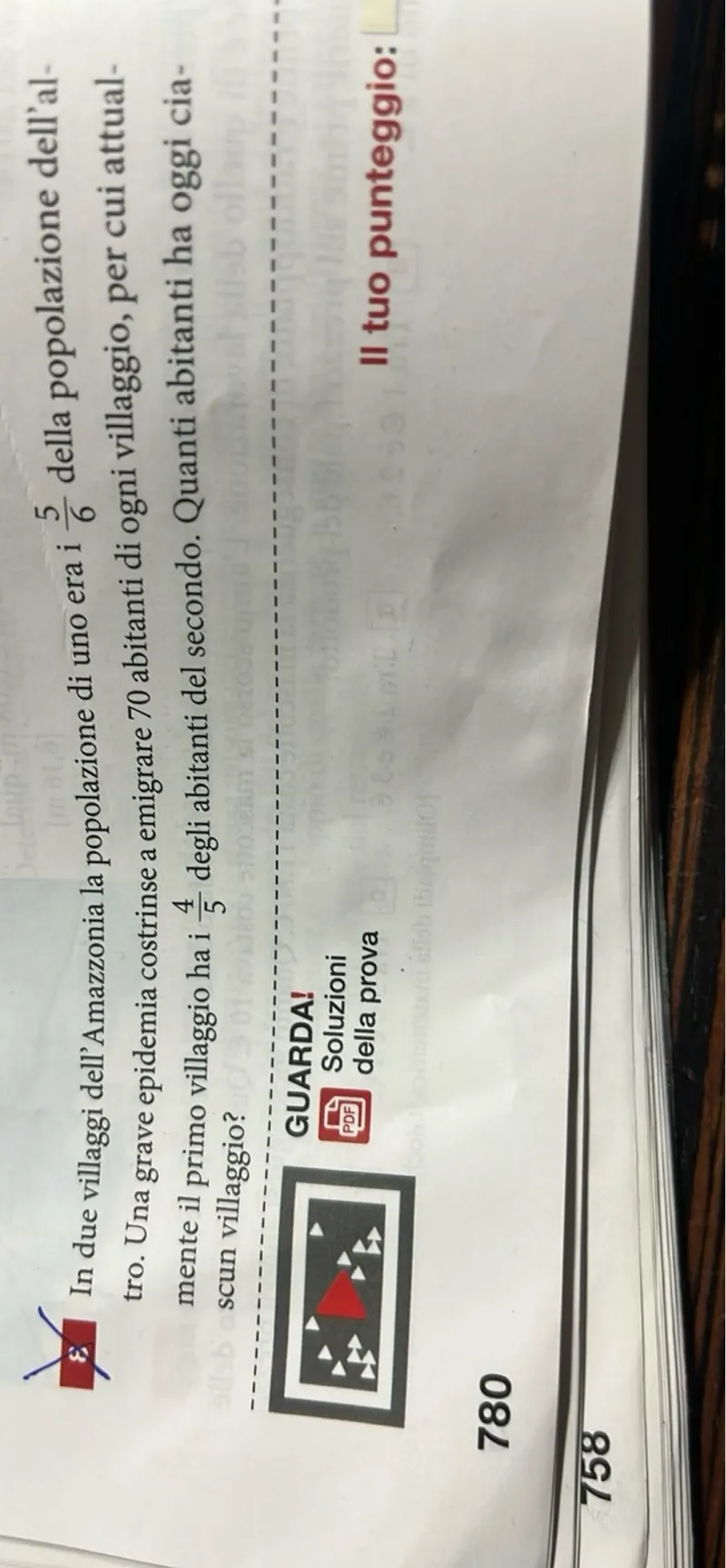Questions: In due villaggi dell'Amazzonia la popolazione di uno era i 5/6 della popolazione dell'altro. Una grave epidemia costrinse a emigrare 70 abitanti di ogni villaggio, per cui attualmente il primo villaggio ha i 4/5 degli abitanti del secondo. Quanti abitanti ha oggi ciascun villaggio?

Transcript text: In due villaggi dell'Amazzonia la popolazione di uno era i $\frac{5}{6}$ della popolazione dell'altro. Una grave epidemia costrinse a emigrare 70 abitanti di ogni villaggio, per cui attualmente il primo villaggio ha i $\frac{4}{5}$ degli abitanti del secondo. Quanti abitanti ha oggi ciascun villaggio?





